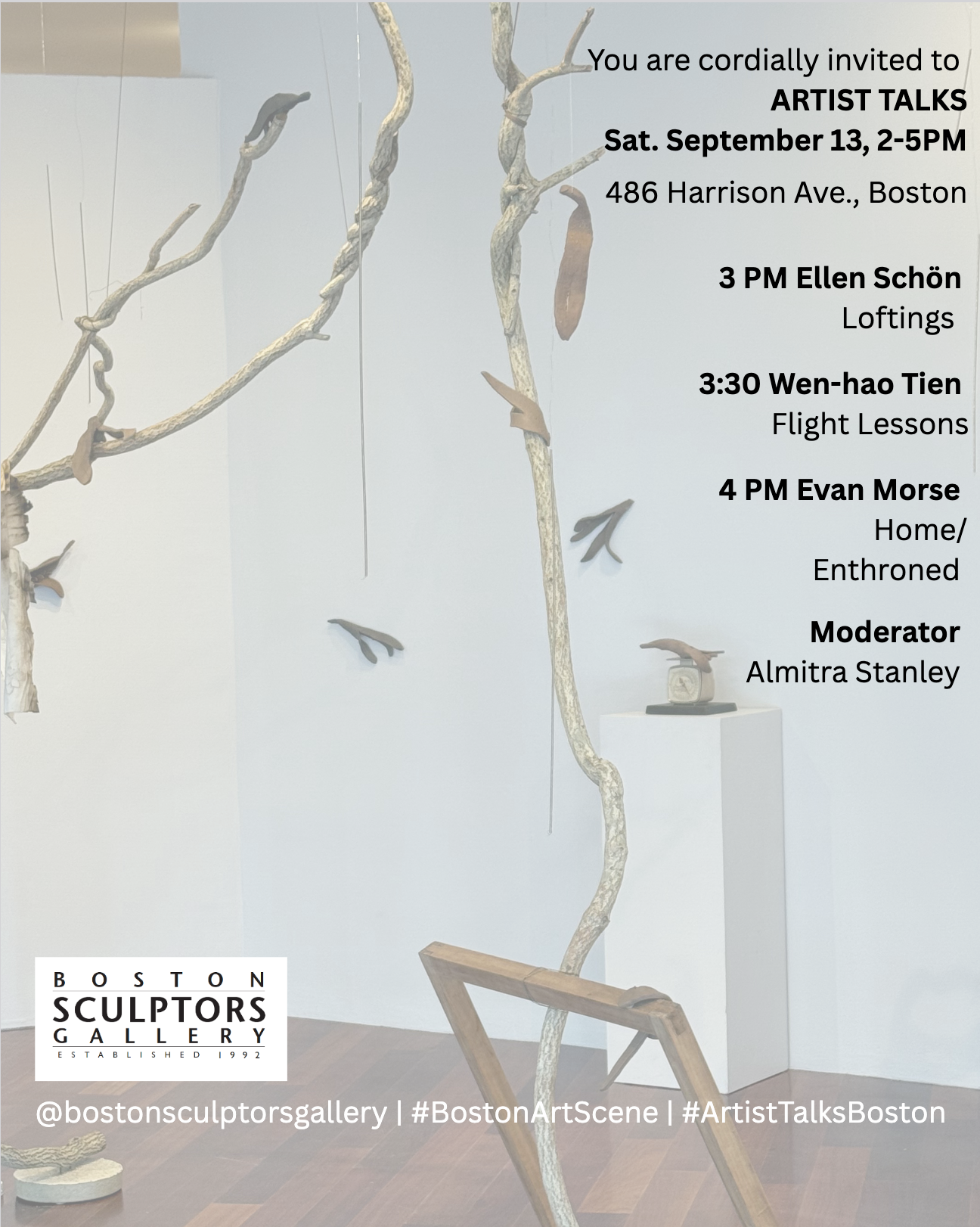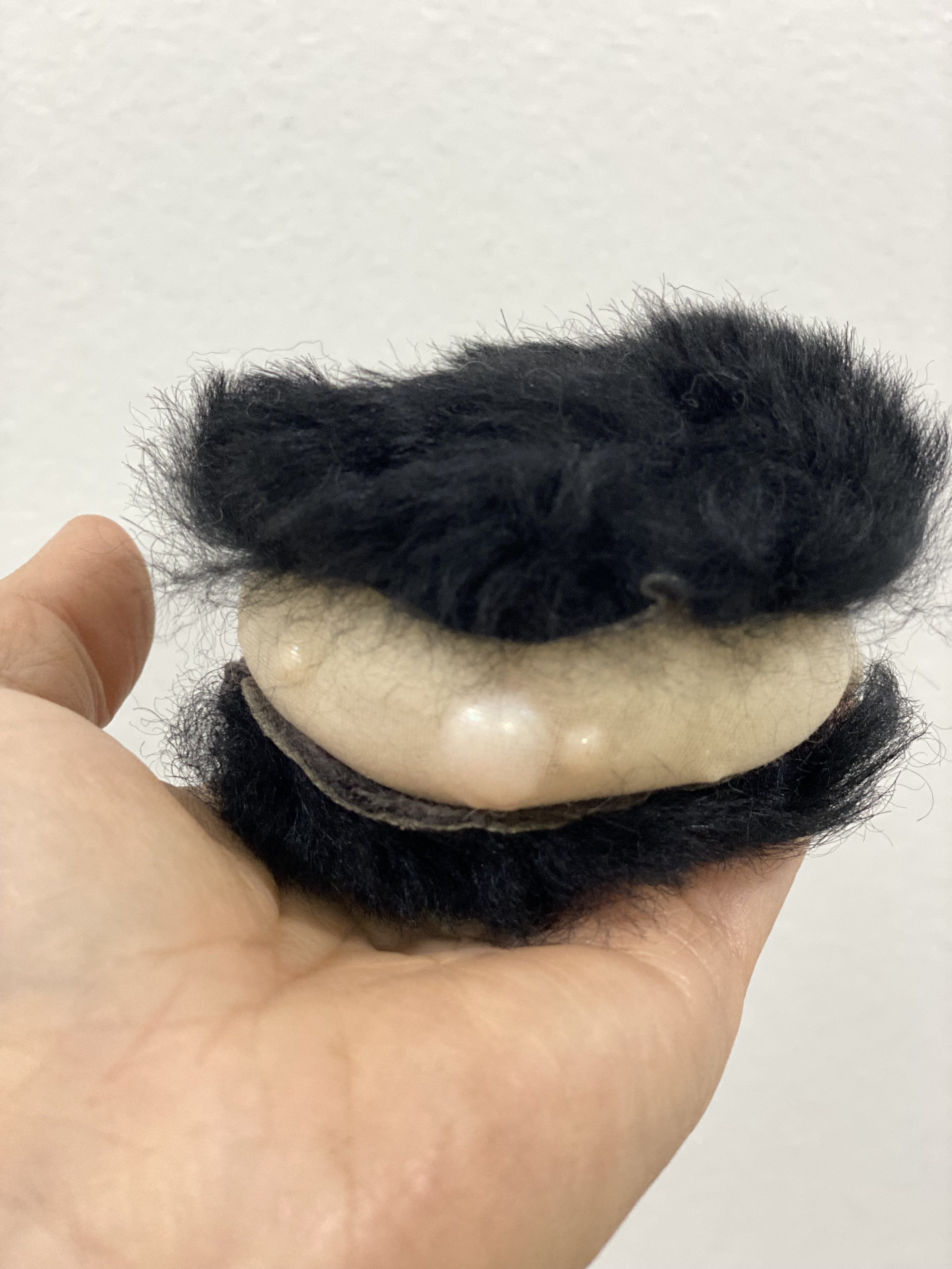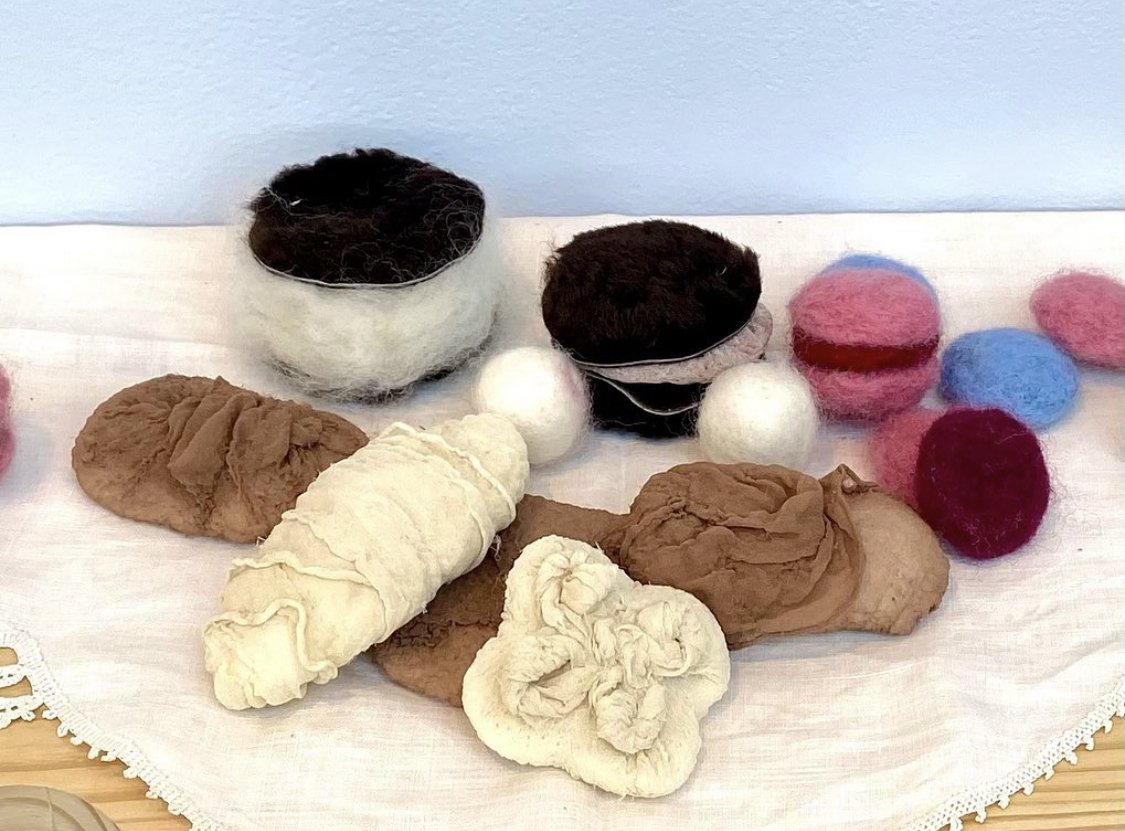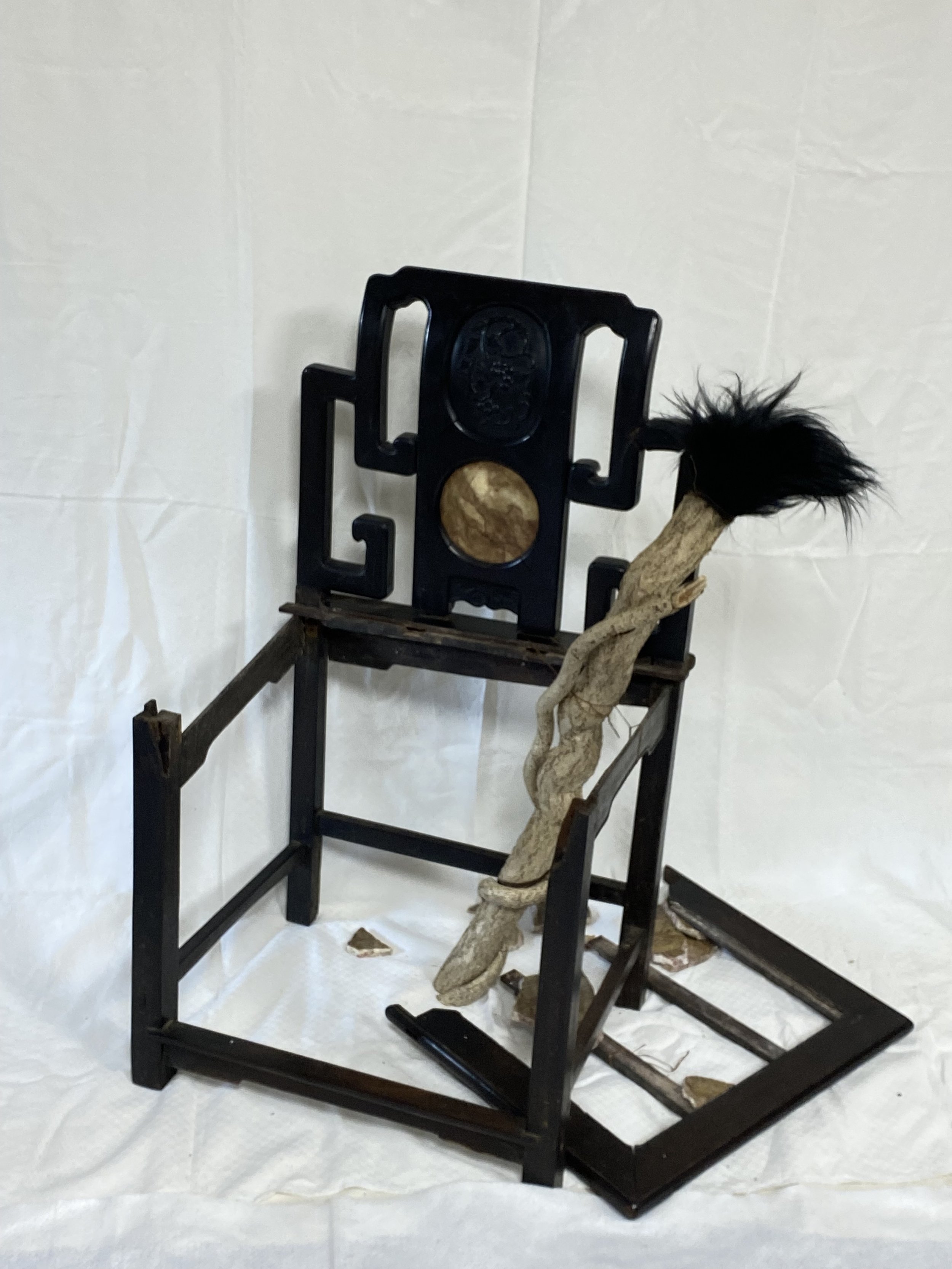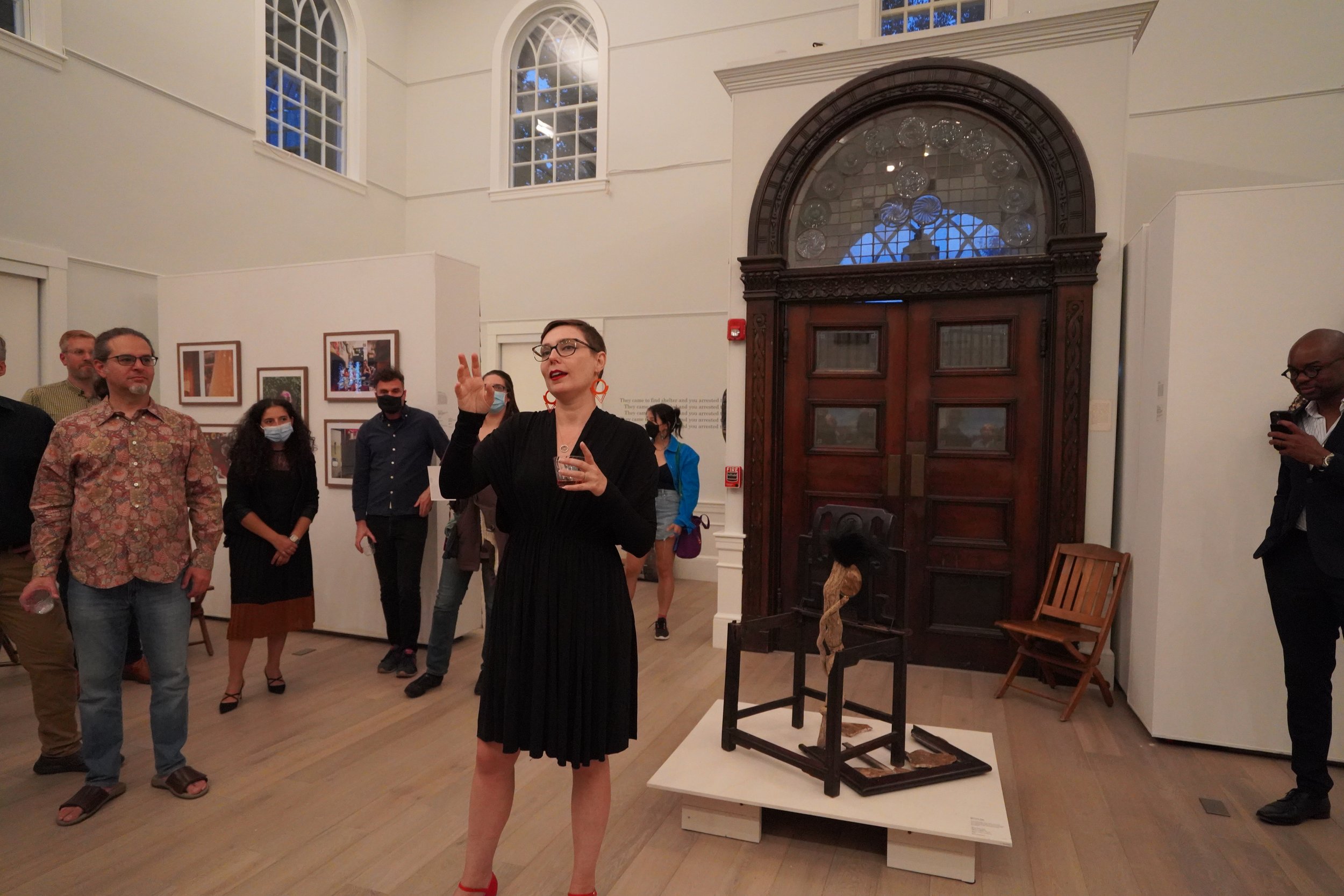Crossing Boundaries & Confounding Identity: Chinese Women in Literature, Art, and Film
I am deeply honored to be included as one of seven artists in the chapter “Woman in Chinese Visual Art over the Last Century”, by Shelley Drake Hawks.
In her thoughtful and thought provoking chapter, Dr. Hawks wrote “Wen-hao’s philosophy of living an observant life and welcoming chance encounters is informed by Chinese calligraphy…Working with live plants—watching them grow under varied conditions--satisfies her love for process, and her embrace of nature as her collaborator.”
I hope you will have a chance to read the full essay and book.
CAMBRIDGE FOUNDRY JUKEBOX
Peter Crawley & I in front of the Jukebox album cover.
Permanent Public Art Installation created by Elisa H. Hamilton and Loop Lab at The Cambridge Foundry, 101 Rogers St. Cambridge, MA
Artist Elisa Hamilton transformed a 1960 Seeburg jukebox from a machine that plays music into a public artwork that plays a growing archive of Cambridge community stories.
As a community member, I contributed a story, as a track in the Jukebox, about our supportive neighborhood and how we built our mixed-cultural families together.
The Jukebox is installed at the Cambridge Foundry - the most exciting new art institution to come to Cambridge since I did.
ENDURANCE STREETS (堅韌的街道): Resilience and Response in Boston’s Chinese Community
September 15 - November 15, 2022
Tufts Medical Center & Boston Chinatown
Curated by Diane O’Donoghue
My “Laundry Rock” project is included in this exhibition. In my paintings, inspired by local history of Chinese laundry businesses, piles of laundry shirts were reimagined into Taihu rock, 太湖石.
This exhibition honors the life long work of Tunney F. Lee (1931-2020), architect, professor of urban planning at MIT. His Chinatown Atlas, the largest and most comprehensive documentation of Boston’s Chinatown, was recently bequeathed to the Chinese Historical Society of New England. I am indebted to Professor Lee who encouraged me in the process of this work.
Endurance Street is a collaboration between Tufts University’s Tisch College for Public Humanities and the Chinese Historical Society of New England (CHSNE).
Boston Sculptors Gallery Artist Member
I am excited to become one of three new full members at the renowned Boston Sculptors Gallery after a two-year term associate member! It is a fantastic community of talented sculptors and I look forward to deepening my commitment to the group. My first solo show at the gallery will be in April 2023—stay tuned! BSG was one of the first galleries to relocate to Boston’s vibrant SoWa Arts district in 2004.
In the meanwhile, I am showing a small-scale work in the window display during the gallery’s next exhibition cycle, October 5-November 6, 2022. Taste sweet just by looking at them! Silk, wool, fur, leather, no stitching. Elements of individual shapes are held together by their material itself.
BSG is currently accepting application for its LaunchPad artists. It is a great opportunity to showcase your brilliant 3D work. Check it out on BSG website!
SANCTUARY CITY
Somerville Museum, MA
On view Sep. 16-Nov. 19, 2022
Sanctuary City, curated by artist Julia Csekö, includes recent artworks by 12 local artists exploring migration and multicultural society. This show also responds uniquely to its site.
I am excited to debut a new piece titled “Have a Seat,” which explores how, in a multicultural society, we often must find new ways of communicating our individuality that push us beyond our comfort zone and evolve our traditions.
When I shared this work with a friend, he responded by sharing this poem. I feel it encapsulates much of my artistic process so I am including it here for you to enjoy.
"Post-Construction" by Kay Ryan
Who knows better
than the builder
not to trust
a structure, where
it's off kilter,
how too few
rafters bear
too much roof?
And still it
may stand, proof
against craft,
strong as though
ghost ribs
had been added
after one left.
Subtitlepod.com with Patrick Cox
Website with audio on Episode 27
Laundry Rocks
Solitary time during the pandemic pushed me to look below the surface of things of our local Boston Chinatown community history, in the building of the Transcontinental Railroad and the business of Chinese hand laundries. Astounded by the harsh working conditions, sheer volume of work, and the importance of sending money home, I created “Moving Mountains” out of a mountain of sawdust and a vintage crate for explosives; and re-imagined piles of shirts into “Laundry Rocks”, something seeming precious. The Chinese has a long tradition in appreciating the worlds within world that a rock offers.
There is a wide gulf and little understanding between early Chinese American laborers and those who came more recently as students or professionals. In my own way, I want to visualize the common thread among the Chinese-we believe mountains can be moved, that worlds exist within a rock, and we respond emotionally to the color red.
This work is included in my next solo show, Home On Our Backs at the Pao Arts Center, Boston, 1/28/2021-6/26/2021
Image transfer, pigments on paper
e-sapien
Paper bags, fabric, 36”x20”x20”
Spent e-commerce bags overflow recycling bin; business shirts are cut-up into masks; we drive less but Zoom down the digital superhighway; what r we b-e-coming?
This work will be exhibited at the show “Becoming” at the Boston Sculptors Gallery, 1/28/21-2/21/21.
You can uncover many stories from a neighborhood walk on trash day. Since COVID pushed us to stay home, spent delivery bags and cardboard e-commerce containers took up my neighborhood sidewalks for weekly collection. In my studio, dress shirts are cut up to make face masks - as we no longer need them for the new “work from home” regime. Solitary time in 2020 affords quietness to look below the surface of things, yet our work is ever more inseparable from everyday life - chores, family, social time…
The digital AI undercurrent is carrying humans into an unknown future and transforming us at every level. How are we adapting to our time - 2020 and beyond?
Life Underground
Foraging in the woodland behind the house in Vermont where my family is staying, I have been pleasantly surprised to find many species of colorful wildflowers sprouting under a single tree. The colorful wildflowers are the result of a complex web of germination and symbiosis that is occurring underground. Exploring the subterranean world of ephemeral woodland flowers reveals how interdependent the root systems of various plant species are - like social networks!
These woodland flowers (Red Trillium, Trout Lilly, Bloodroot…) live only between the time the ground thaws and the deciduous trees sprout leaves that starve the flowers of sun. An “accurate” sketch of this site must begin below the ground level - from the bottom up. Aboveground it looks simple, but underground it’s complicated.
Solitary time during COVID-19 has pushed me to look below the surface of things. Days are filled with tasks aimed at achieving big ideas-and I feel busier than before. Many friends say the same. What are the big ideas?
If we want 2021 to yield a rejuvenated world, shouldn’t we be busy preparing our fields? Can we learn from the ephemeral wildflowers and build an underground network to support the miracle of rebirth?
——-
We are grateful for the friendship of Peggy and Sparky Potter, who shared their woodlands and knowledge with us.
This work is complemented with an essay by my husband and fellow forager, Peter Crawley, a writer and environmental sustainability consultant.
——-
During the COVID quarantine, we find ourselves lost in the woods. This has its benefits. You’ve got to get lost before you can find your way home.
In the woods we see how the flora and fauna behave. They each have their role, and they perform it for the benefit of the whole, like a synchronized forestdance. The ants carry seeds; the bees pollinate; the ephemerals bloom until the deciduous trees leaf; mighty trees fall and fungi convert them to compost to feed the cycle. There is balance and mutuality in the system. And supporting it all is a network of underground roots and mycelium that act as connectors and communicators between actors. There can be miles of mycelium under a single decomposing log, and thousands of interconnecting roots, from minute to massive, under a single living tree. The underground network is foundational to the aboveground performance.
What directions can we take from this forestdance? How do we find home? The root systems remind that humanity is also connected by networks, tangible and intangible, technical and political, that act as control centers of the show. As author Paul Hawken describes in “Blessed Unrest: How the Largest Movement in the World Came into Being and Why No One Saw It Coming”, society has millions of organically formed networks, grown and “connected by the heart”. We have seen these networks at work during the pandemic, sewing masks and delivering food when the official system was overwhelmed or incapable. In times of need, humans prove as dutiful as ants navigating great danger to feed the colony. Humans are also as wise and ruthless as mushrooms, decomposing old structures to sustain the new.
It is springtime in the woods. The ephemeral wildflowers rise-up from the finally unfrozen ground. Their bugle-shaped blossoms incite a riot of color in colonies across the forest floor. A cry to wake-up! (They know the window of opportunity is short.)
The Native Americans understood woodland ephemerals. They used tinctures of Blood Root to treat respiratory ailments, and teas made from Red Trillium to induce birth. Drink-up and take strength! (That’s the forest talking.) It is our moment to mid-wife a movement, from bottom up; our time to follow our better nature to a better balanced and fair political system.
Wake-up your network! It is the season of blessed unrest.
Am I Really Herel, Wen-Hao Tien, 2020
Am I Really Here?
Untitled, video loop, work in progress.
Mount Hope Cemetery - Lots A, C, E
Visiting Mount Hope Cemetery, where many early Boston Chinatown immigrants are buried, I sensed the complex feelings of a class of forgotten people. I sensed kinship mixed with homesickness, friendship mixed with deep loneliness, pride with regret.
———
Mount Hope Cemetery - Lots A, C and E are the burial grounds of the first wave of immigrants to Boston Chinatown in the early 1900s. Regarded as a virtue in Chinese social thinking, 落葉歸根, all things return to their source in old age - and expatriates return home, too. The Chinese family association of the deceased with financial means and known relatives, would arrange disinterment and trans-pacific shipping of bones to one’s ancestral village for proper reburial. The ones who remained here were the unfortunate ones. Lots A, C, E are respectfully clean thanks to the grassroots effort of the Boston Chinatown community and educational programs. However, it does not prevent me from sensing the poverty and loneliness of the people buried there. I am painfully reminded of the risk they took by leaving home in search of food, work and safety.
Reflecting on this feeling, I inscribed marks on broken stones. Illegible markings on stone pieces found at random spots in an anonymous ravine. Weather and rushing water wash-away the markings on the stones. The ink tints the stream, expressing itself for a brief final moment.
Am I really here?
This place, unfamiliar to me
May I go home?
-Homesick by Devon McElveen
小時候
鄉愁是一枚小小的郵票
我在這頭
母親在那頭
長大後
鄉愁是一張窄窄的船票
我在這頭
新娘在那頭
-excerpt of 鄉愁 by 余光中
鄉愁, homesickness
nostalgia, saudade…
our universal struggle with belonging and not belonging.
How do you name yours?
At this troubling time of COVID-19, in New York City, where the death toll is close to 600 a day, unclaimed bodies with no known next of kin or families unable to pay for burial, are interred in a mass grave on Hart Island in the Bronx.
Did they go home?
_____
The 1,500 graves at the Mt. Hope Cemetery are physical evidences of Boston’s early Chinese immigrants. I would like to express my deepest gratitude to Boston Chinatown native, Nancy Lo, and UMass Boston Asian American Studies Professor, Peter Nien-chu Kiang, from whom I learned about the Mount Hope Cemetery. You can read an article by Professor Peter Nien-chu Kiang here, and find additional information through the Chinese Historical Society of New England (CHSNE) here.
Mt. Hope Lot A, Wen-hao Tien, 2020
Hong Qunzi (48”x24”, plastic grocery bags, tape) hanging at the artist’s studio
Hong Qunzi/Red Dress 紅裙子
I never miss someone carrying a red plastic grocery bag on a subway ride. They’ve been to Chinatown. Coming to the United States as a graduate student some 30 years ago, I no longer live only on Chinese food. My palate has adapted to Western cuisine, among other things. But the sight of a red plastic grocery bag brings a familiar taste that reminds me of who I am.
The remembrances triggered by red plastic bags, personal and delightful to me, are expressed in my new work: “Hong Qunzi/Red Dress” (24”x48”, plastic bags and tape, 2020). Since I made it, I have been wanting to wear it while dancing under the Chinatown gate, or sitting in a bakery chatting with Nancy over naicha. Nancy is a Chinatown insider.
I used to say that even though I am Chinese, this is not my Chinatown. I am an outsider. It is only after meeting Nancy, that I became an “accepted outsider”. Nancy introduced me to Auntie Amy and various Chinatown family associations. We also visited Mount Hope Cemetery. (Chin-ming is on April 4th). I learned about the unique Boston Chinatown social networks that built multi-generational businesses - and the stories behind the stories.
Unfortunately, the dress is made, but the party has been cancelled-as community engagement does not mesh well with social distancing. So I am meeting you here online. Please visit my semi-monthly post that showcases a new work, inspired by a Chinatown insider story.
The guest contributor for this week’s post is art historian Shelley Drake Hawks, who explores the color “red” in Chinese culture. Enjoy.
RED, the color of fire, “may cause a sensation analogous to that caused by a flame” said Russian painter Wassily Kandinsky, who noticed that warm, light, and pure colors exercise an enormous influence over the body. He described red as the most active and vigorous color of all. In Concerning the Spiritual in Art (1911), Kandinsky wrote: “the unbounded warmth of red…rings inwardly with a determined and powerful intensity.” Kandinsky theorized that an encounter with red activates a whole chain of powerful sensations, including feelings of strength and determination. He called red a “beloved” color intrinsic to peasant costume throughout human history.
Red has profound meaning for Chinese culture and for Chinatowns in particular. Red symbolizes liveliness and good will. It is the color of family celebrations, weddings, and banquets. At Chinese New Year’s, Boston’s Chinatown becomes awash in red paper, radiating good fortune and welcoming the whole city. The color of ripe fruits and blossoming flowers, red signifies abundance. In her 1986 study of papercuts and embroidery in Chinese Folk Art, Nancy Zeng Berliner describes red’s association with fu 福(prosperity) and xi 喜, happiness. ”In Chinese belief, because red is the color of blood, it is the color of life, and hence associated also with yang 阳, the positive, male, life-giving force of the yin-yang polarity…All yang elements protect against evil and so reinforce life.“
Seen in this light, the red shopping bags supplied to Chinatown’s customers become important physical objects marking Chinatown’s identity. Each bag fosters a relationship between the recipient and the Chinatown community. The red surface of the bag catches the eye and sets off a powerful form of communication, triggering metaphors and associations. Perhaps the red bags signal a capitalist wish for material wealth—an invitation to customers to buy more and to buy often. Perhaps the red bags offer a blessing for long life, the memory of delicious food, or a welcome for outsiders. What do the red bags mean for you? How do they make you feel?
Besides groceries and restaurants, stationary stores are fundamental to Chinatown’s commercial life, offering supplies for customers who wish to learn or practice writing Chinese characters. Red plays a vital role even here. Although the primary colors for painting and calligraphy are black for ink and white for paper, bright red is the color of cinnabar, the mineral used for seal paste. A painter or a calligrapher uses this paste to imprint their name seal on a completed artwork, thus leaving a residue in bright red of their unique personality.
Shelley Drake Hawks 何雪丽, Ph.D.
Wen-hao Tien is the Pao Art Center's Artist in Residence 2020
Unveiling Boston Chinatown
Wen-hao Tien is a Cambridge-based visual artist and educator. Wen-hao grew up in Taiwan, with family roots in Shandong Province, China. She moved to the United States in 1988 to pursue her graduate studies and ultimately became a naturalized citizen.
Early in her career, Wen-hao exhibited contemporary Chinese calligraphy and multi-media paintings. In recent years, she finds herself leaving the studio to forage for materials and stories on community streets - which brought her to Boston Chinatown. She feels an urgency to interpret the shifting Chinatown cultural landscape, which has changed radically since she first encountered it in the 1990s.
While in residency at BCNC Pao Arts Center, Wen-hao will draw upon visual and audio inspirations from the Chinatown community to capture the nuances and textures of a place and people in transition. She will also host workshops to engage in an exploration of a diverse and complex local diaspora and Asian American culture, past/present/future. Follow Wen-hao’s residency on this blog.
